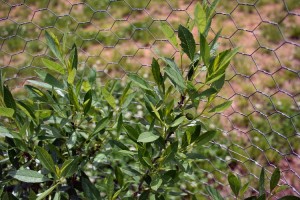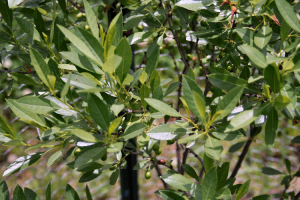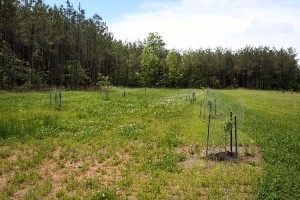Our Burbank Plum tree has set fruit! This is only its second year in the garden. We bought it as a three-foot tall whips (stick-like baby trees) from the Arbor Day Society.
The Burbank Plum (Prunus salicina) is a no-fuss plum tree that bears reddish-purple fruit with a bit of yellow in the skin. It’s supposed to grow 10 to 35 feet tall.

According to the Arbor Day Society website, it prefers “non alkaline, sandy loam soils” which is exactly what we’ve got. Luther Burbank developed it in 1883 from Chinese and Japanese plums.
We planted two Methly plums nearby, and the pollinating flies were going crazy on the white blossoms. Looks like they did their job. The little plums look like olives.
These are pictures from our orchard. We have about half an acre planted with thirty fruit trees. The plums and apricots are doing the best. The cherry trees look the worst. The cages aren’t to keep the trees in – they aren’t that badly behaved – but to keep deer and other critters out.
We were told that it would take 5-7 years from the time we planted the immature trees until we harvested some fruit. It looks like these plums must REALLY like it here!







I love your orchard! I am still planting mine and have 4 kinds of apples, a Saturn peach and 6 cherry trees. In the yard I also have a stanley plum and another type of cherry. I have so many other things I would still like to plant. Yours looks so nice!
What a good result.
Maybe this is a sign of things to come.
I think orchards are just beautiful. I love them when the grass is allowed to grow tall around each tree giving a meadow feel yet with the productivity of all the fruit. Best of both worlds.
Rob
Thanks Heather! We have 10 apple trees, 4 pear, 4 peach, 4 plum, 2 cherry and 2 apricot. This year they look healthy and are growing so I am hopeful!